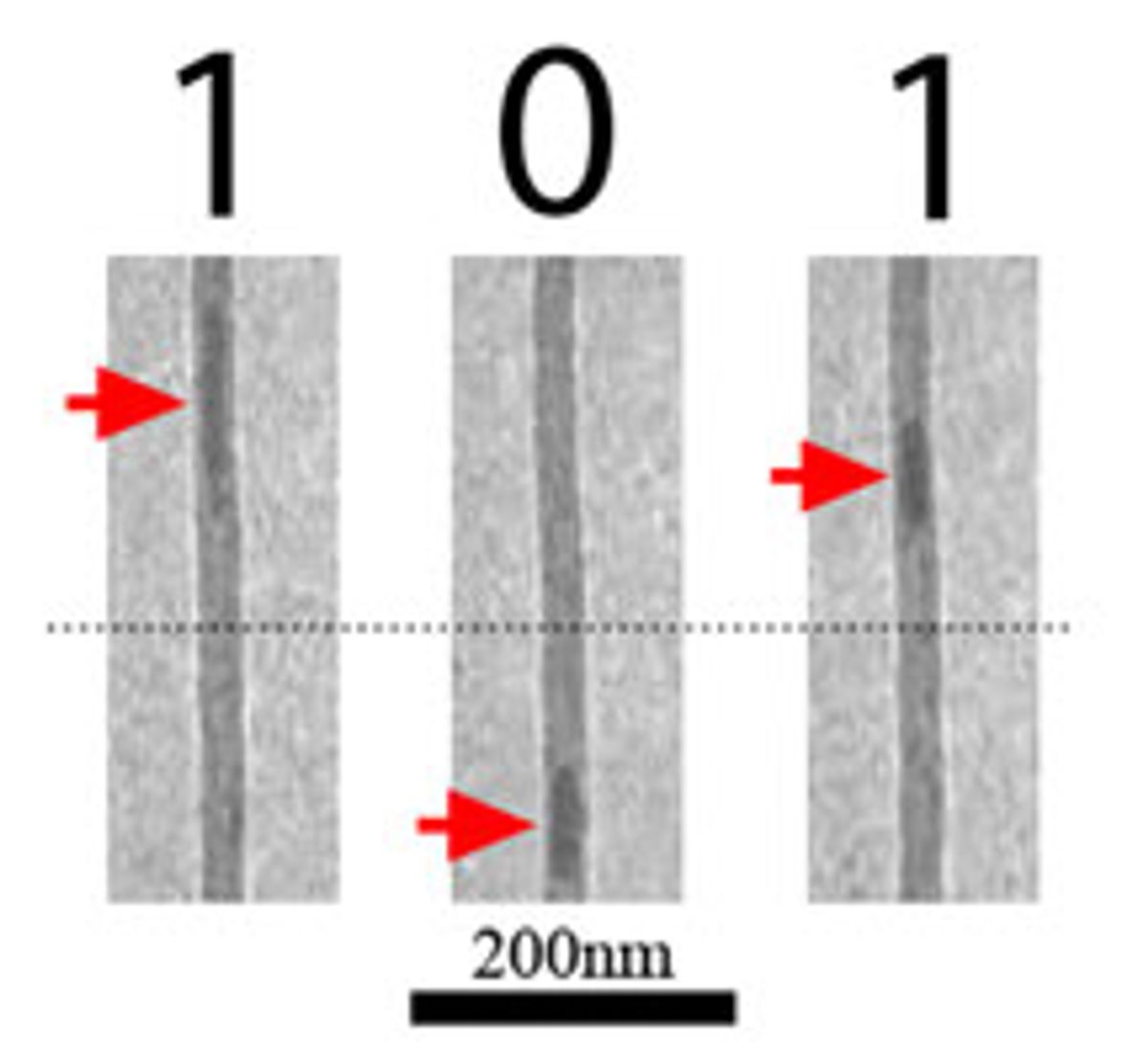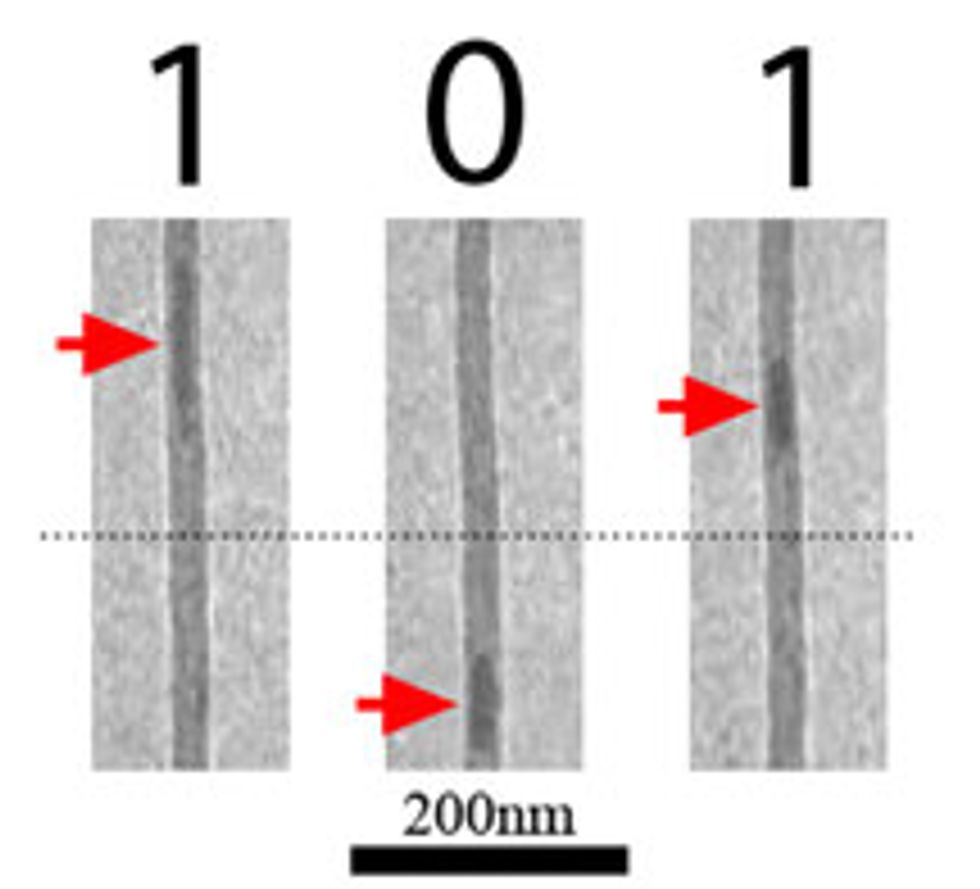5 June 2009—A team of physicists led by Alex Zettl of the University of California, Berkeley, has created a carbon nanotube–based electromechanical memory device that they say can store bits safely for up to a billion years. Details of the advance, which is being acknowledged by independent experts as a breakthrough, will be reported in the 10 June issue of the journal Nano Letters .
Zettl and his colleagues constructed their memory device by taking an iron nanocrystal and placing it inside a hollow carbon nanotube. The iron particle is able to shuttle back and forth along the hollow cylinder, which provides a mechanism to create the 1 and 0 states required for digital bits. Electrodes are attached to the ends of the carbon nanotube, and the movement of the iron particle is controlled through the application of an electrical current. Writing information into the new memory cell is relatively easy, says Zettl. ”The real challenge was figuring out how to read out the device,” he says.
But measurements of the nanotube’s resistance suggested a way. ”There is a direct correlation between the nanoparticle’s position and resistance,” Zettl says. So reading the resistance, using pulses of current too puny to push the nanocrystal out of position, revealed the stored information.
Caroline Ross, a professor of materials science at MIT and an expert on memory technologies, is impressed. ”It is a very elegant demonstration of electrical write and read back of a nanomechanical device,” she says.
Zettl says that his team’s studies show that the memory cell has a storage capacity as high as 1 terabyte per square inch. But perhaps more unusual is that theoretical studies show that its bits are expected to persist for more than a billion years. ”At room temperatures, it is incredibly stable,” says Zettl.
Today’s common nonarchival memory technologies, such as flash memory, retain their data for decades at most. Archival technologies, such as magnetic tape and the humble ink on paper, should last hundreds of years.
In all cases, the issue is combating the second law of thermodynamics, which says that entropy, or disorder, always rises in a closed system. This takes the form of some combination of electronic or magnetic noise, substrate degradation (decomposition of paper, plastic, and dyes), magnetic domain flipping, and other ways that things fall apart.
”Any archival system has to be chemically stable, which is to say it has to have a high activation energy for destruction,” says Professor John Kymissis of Columbia University, in New York City. ”This proposed system has that characteristic.
”What is particularly clever about this approach is that it is simple and uses only two well-understood components,” said Kymissis. ”This limits the possible degradation mechanisms and allows the relatively bold claim of a billion years of stability.”
The real difficulty, say experts, lies in creating a version of the memory with millions of memory cells instead of just the one Zettl’s group tested.
”This demonstration is for a single memory cell, and the issues of integrating billions of such structures on a chip would need to be addressed,” says Ross. ”We also do not know the bit-to-bit reproducibility, since only one device was tested, and how many cycles it could withstand before degradation.”
Bit-to-bit reproducibility is ”the biggest challenge, since the parameters for the cells will be different,” agrees Zettl, who says the team is now working to try to figure out the best way to attack the problem.
About the Author
Saswato R. Das is a science writer based in New York City. In the June 2009 issue he reported on the development of two-laser lithography.

